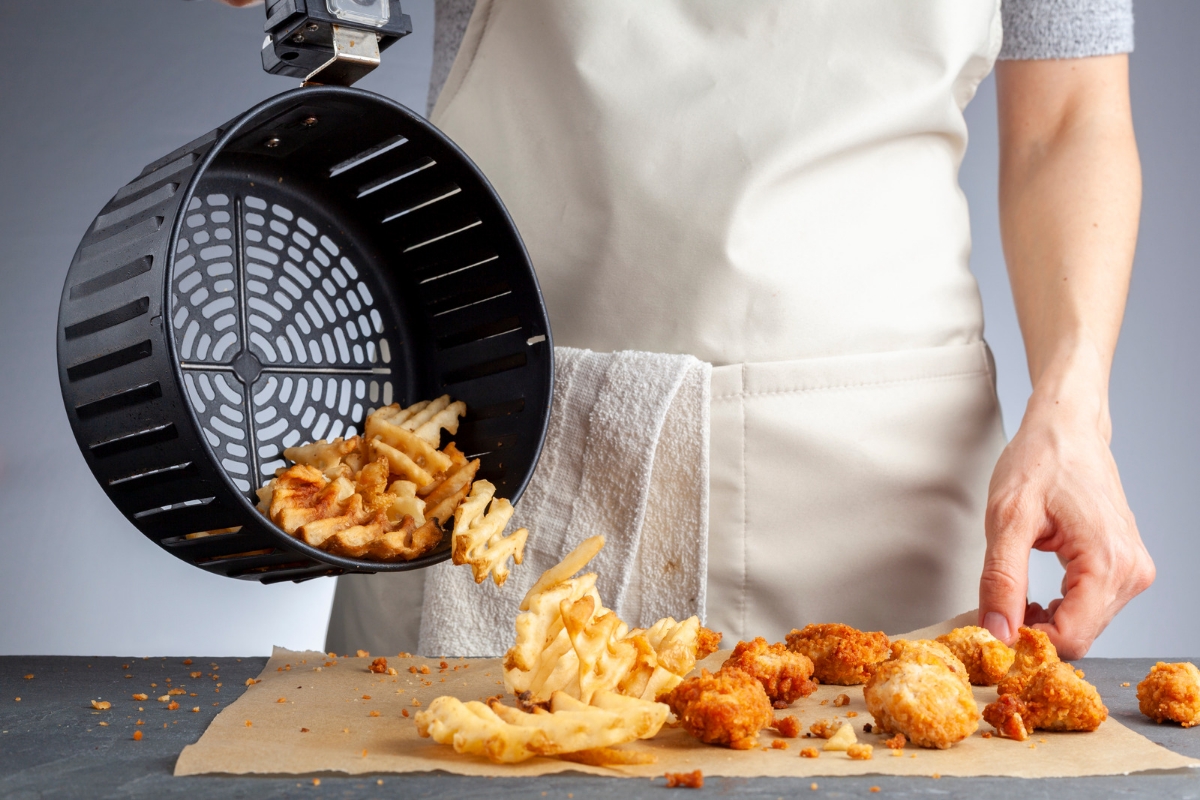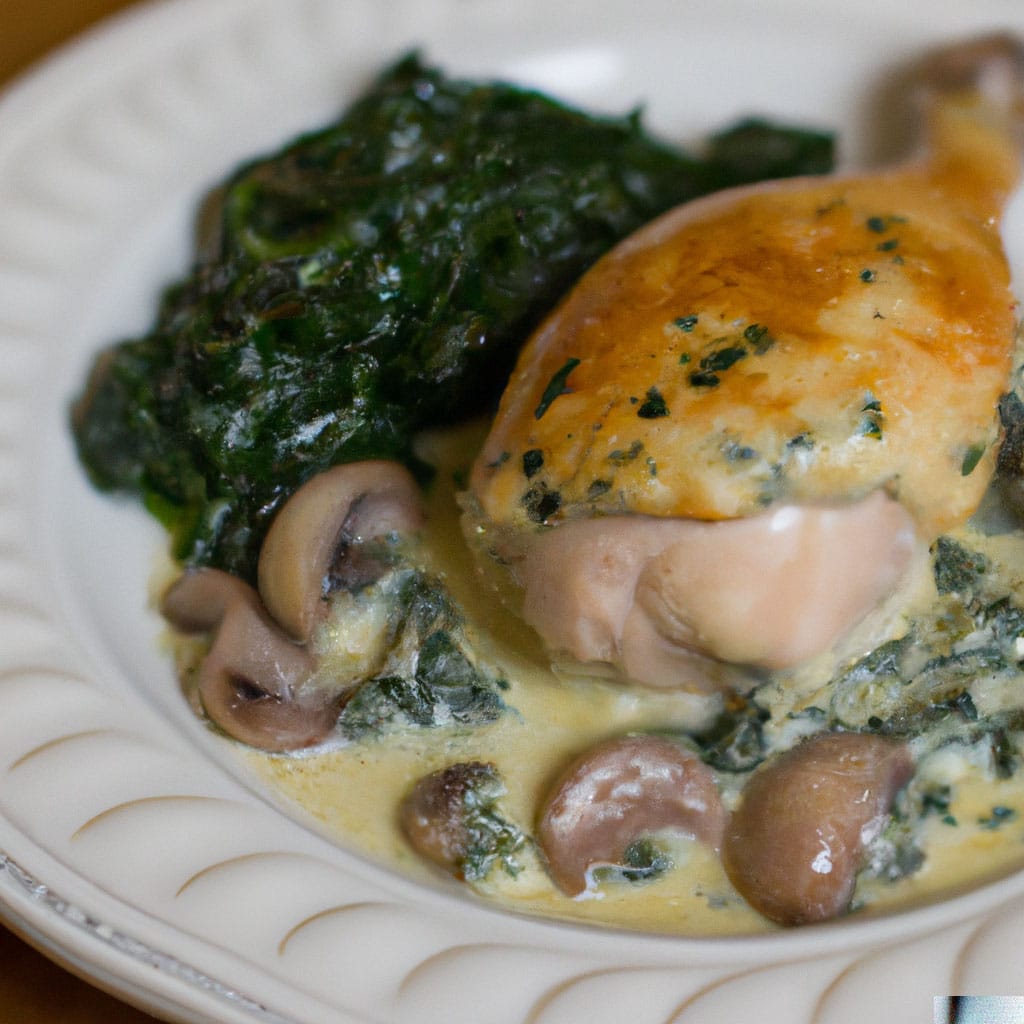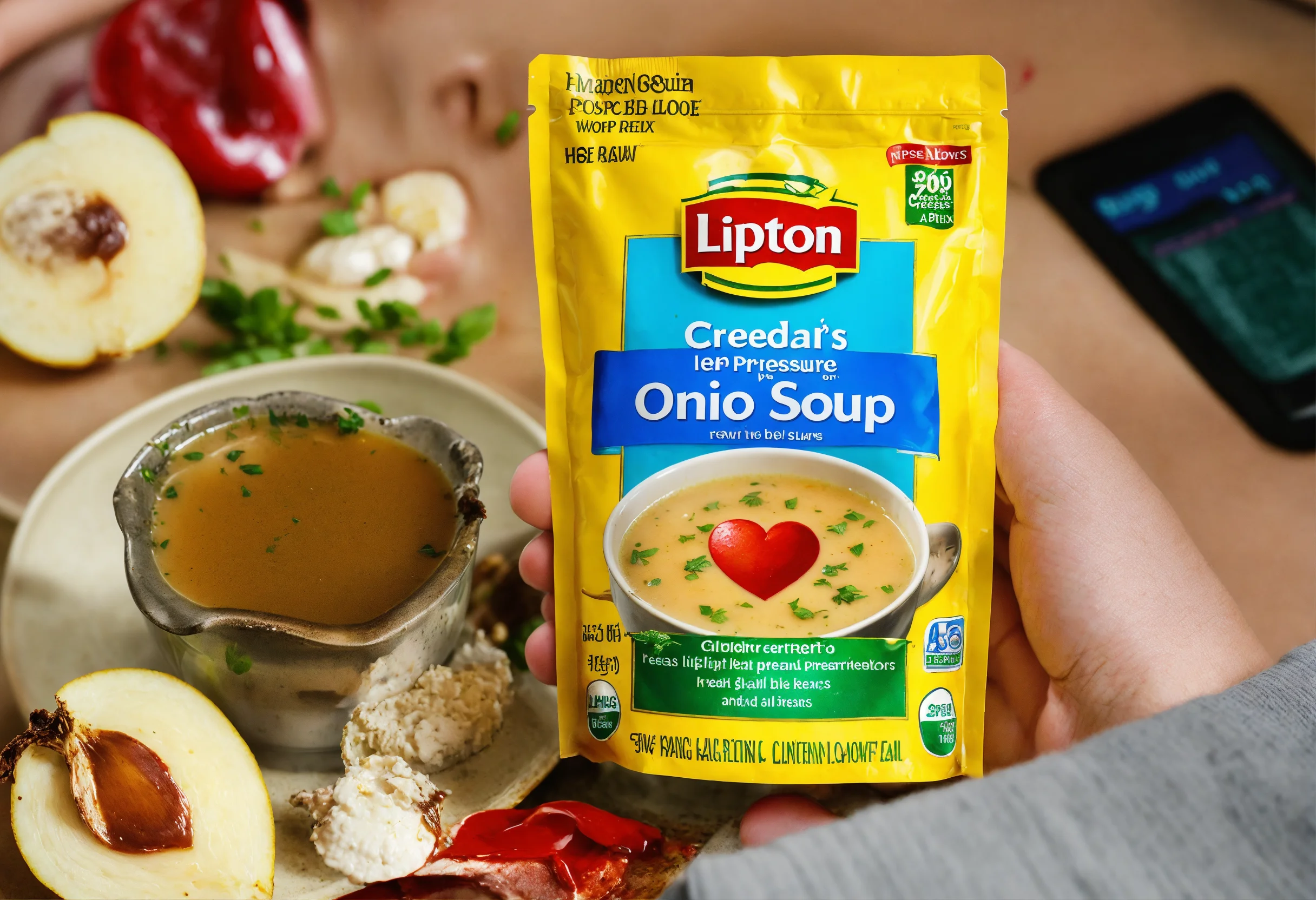Introduction
Welcome to the delightful world of gluten-free bagel recipes! Here, we merge taste with health, creating a fusion of flavor and well-being in every bite. This article goes beyond just providing recipes for wheat-free bagels; it’s an exploration into the art of culinary creativity, tailored for those who crave the classic bagel experience without the gluten. From understanding celiac-friendly diets to mastering the perfect texture for glutenless bagels, we cover it all. Whether you’re a seasoned baker or just beginning your gluten-free journey, these insights and recipes are designed to transform your kitchen into a haven for gluten-free baking. So, let’s embark on this delicious adventure into the world of gluten-free bagels, where every recipe is a discovery in taste and health. like preparing frozen salmon in the air fryer.
Embracing Wheat-Free Bagel Ideas
Basics of Celiac-Friendly Diets
Understanding a celiac-friendly diet is key in our wheat-free bagel journey. Gluten, found in wheat, barley, and rye, is a no-go for those with gluten intolerance or celiac disease. Adopting a gluten-free lifestyle is essential for health, not just a dietary choice. It’s about exploring a variety of grains and flours, each offering unique flavors and textures. For a deeper understanding of celiac disease and its dietary implications, explore Beyond Celiac’s detailed overview of What is Celiac Disease?
Growing Trend of Glutenless Bagels
Glutenless bagels are more than a dietary need; they’re a culinary trend. They blend the traditional bagel’s charm with the health perks of being gluten-free. This popularity has sparked innovation in gluten-free baking, leading to diverse and tasty recipes.
In this section, we’ve begun to explore the world of gluten-free bagel baking. We’ve set the stage for a deeper dive into the ingredients that make these bagels both possible and delicious. Next, we’ll delve into the core components of no-gluten bagel preparation, where the real magic begins!
Part 2: Core Components in No-Gluten Bagel Preparation (400 words)
Selecting the Right Glutenless Flour Mix
In the realm of Gluten-Free Bagel Recipes, choosing the right flour is a game-changer. Unlike traditional wheat flour, gluten-free blends are a mix of various grains and starches. Each blend brings its unique texture and flavor, making the choice critical. You’ll often find rice, almond, and tapioca flours, combined with binders like xanthan gum or psyllium husk. These ingredients work together to replicate gluten’s elasticity. Experimentation is key here; trying different blends can lead you to your ideal bagel base. While selecting the right flour mix for your gluten-free bagels, consider exploring other gluten-free cooking methods, such as making perfect frozen French fries in an air fryer.
Leavening Essentials for Gluten-Free Bagels
Now, let’s focus on leavening agents. Yeast is a popular choice in gluten-free baking, particularly for bagels. It gives that desired airy texture and a hint of tang. For those who avoid yeast, alternatives like baking powder are available. The goal is to achieve a good rise and the chewy texture that bagels are known for.
Binding and Moisturizing Elements
Binding and moisture are crucial in gluten-free baking. Since gluten-free flours lack gluten’s natural binding properties, alternatives such as eggs, xanthan gum, or flaxseeds are essential. They help to keep the dough together. Moisture balance is equally important. Too little, and the bagels turn out dry; too much, and they become overly dense. Finding the right balance is key to creating the perfect bagel.
In this section, we’ve explored the essential ingredients for successful Gluten-Free Bagel Recipes. Next, we’ll dive into the practical side of things. We’ll mix, knead, and shape our way to creating delicious gluten-free bagels. So, stay tuned for the hands-on part where the real fun begins!
Part 3: Crafting Your Ideal No-Gluten Bagel (500 words)
Traditional Gluten-Free Bagel Method
Embarking on your Gluten-Free Bagel Recipes journey, the traditional method is a great starting point. Begin by mixing your chosen gluten-free flour blend with yeast, sugar, and salt. Next, add warm water and any binding agents like eggs or xanthan gum. Knead the dough until it’s smooth and elastic, a crucial step for that perfect bagel chewiness. Let the dough rest briefly; this allows the yeast to activate, contributing to a better rise. Once you’ve mastered your gluten-free bagel recipe, why not pair it with a savory dish like the original Lipton onion soup meatloaf?
Now, shape the dough into bagel forms. A handy tip is to roll each piece into a ball and then press a hole through the center, gradually widening it. Once shaped, the unique step for bagels comes into play – boiling. Boil each bagel briefly in water mixed with a touch of honey or molasses. This step is essential for achieving that signature glossy crust and chewy interior.
Innovative Variations: Flavors and Toppings
After mastering the basic recipe, why not get creative? Gluten-free bagels offer a canvas for a variety of flavors and toppings. Consider adding cinnamon and raisins to the dough for a sweet twist, or mix in some garlic and onion powder for a savory option. Toppings like sesame seeds, poppy seeds, or everything bagel seasoning can be added just before baking, giving an extra layer of flavor and texture.
Bake your bagels until they are golden brown and have a crispy exterior. The aroma of freshly baked bagels filling your kitchen is a reward in itself. Let them cool slightly before serving, and then enjoy the fruits of your labor – fresh, homemade gluten-free bagels that are as delicious as they are satisfying.
In this part, we’ve walked through the steps of making traditional gluten-free bagels and explored ways to add your own twist to the recipes. Next, we’ll delve into tips and tricks for ensuring your gluten-free bagels are always top-notch. So, stay tuned for the next part, where we’ll share expert advice for perfecting your gluten-free bagel baking skills!
Part 4: Perfecting the Craft of Glutenless Bagel Baking (300 words)
Texture Perfection in Gluten-Free Bagels
Achieving the ideal texture in Gluten-Free Bagel Recipes is a delicate balance. Firstly, the dough’s consistency is crucial. It should be firm enough to hold shape, yet soft enough for a satisfactory rise. Avoid the common pitfall of adding too much flour, which can lead to tough and dense bagels. Instead, aim for a tacky, not sticky, dough. This consistency is key for a moist interior and a chewy crust.
Oven Techniques for the Ideal Crust
Moreover, the baking process is as critical as preparing the dough. Begin by preheating your oven to the correct temperature. A sufficiently hot oven is vital for a crisp exterior. When you place the bagels in the oven, consider introducing steam during the initial baking phase. This method contributes to a glossy, crackly crust. Additionally, rotating the baking sheet halfway through ensures even browning.
Furthermore, it’s important to remember that ovens vary, so keep a close eye on your bagels. They should achieve a golden brown color when perfectly baked, and the internal temperature should be around 180°F. Finally, cooling them on a wire rack prevents the bottoms from becoming soggy.
In conclusion, this part has provided essential tips for achieving the perfect texture and crust in your gluten-free bagels. Next, we’ll explore how to adapt these recipes to various dietary needs. This ensures that everyone can enjoy these delightful treats, regardless of their dietary restrictions. So, stay tuned for the upcoming section, where we delve into making gluten-free bagels suitable for different diets!
Part 5: Customizing Gluten-Free Bagels for Various Diets (300 words)
Vegan and Lactose-Free Variations
For those following a vegan or lactose-free diet, adapting Gluten-Free Bagel Recipes is straightforward. Replace dairy ingredients like milk or butter with plant-based alternatives such as almond milk or vegan butter. Moreover, if the recipe calls for eggs, flaxseed or chia seed mixtures can be excellent binders. These substitutions not only cater to dietary restrictions but also add unique flavors and textures to the bagels.
Substitutes for Allergy Restrictions
Additionally, for those with nut allergies, gluten-free bagel recipes can be modified by using nut-free flour blends. Options like oat flour or a mix of rice and tapioca flour work well. Furthermore, for egg allergies, aside from flax or chia seeds, commercial egg replacers are also effective. It’s essential to ensure that every ingredient aligns with specific dietary needs while maintaining the quality and taste of the bagels.
In this part, we’ve explored how to adapt gluten-free bagel recipes to various dietary requirements, ensuring everyone can enjoy these delicious treats. Next, we’ll answer some common questions in our FAQ section, providing further insights into the world of gluten-free bagel baking. So, stay tuned for helpful tips and answers to your queries!
Part 6: Resolving Queries on No-Gluten Bagel Recipes (300 words)
Frequently Asked Questions with Expert Insights
Q1: Can I make Gluten-Free Bagel Recipes without a stand mixer?
A1: Absolutely! While a stand mixer makes the process easier, you can certainly mix and knead the dough by hand. The key is to ensure that all ingredients are thoroughly combined and the dough is kneaded until smooth and elastic.
Q2: How do I store gluten-free bagels to keep them fresh?
A2: Gluten-free bagels are best enjoyed fresh, but you can store them in an airtight container at room temperature for up to two days. For longer storage, freeze them in a sealed bag. Simply thaw and toast to enjoy later.
Q3: Can I use all-purpose gluten-free flour for bagels?
A3: Yes, you can use all-purpose gluten-free flour. However, for the best texture, look for a blend specifically designed for bread baking, as it will likely yield a better rise and chewier texture.
Q4: Are there any quick tips for ensuring a good rise in gluten-free bagels?
A4: Ensure your yeast is fresh and active for a good rise. Additionally, letting the shaped bagels rest for a few minutes before boiling can help them puff up nicely.
Q5: What’s the best way to achieve a shiny crust on gluten-free bagels?
A5: Boiling the bagels before baking is crucial for that shiny crust. Adding a bit of honey or baking soda to the boiling water can enhance the sheen and color.
In this FAQ section, we’ve addressed some common questions about Gluten-Free Bagel Recipes, offering insights and tips for successful gluten-free bagel baking. With these answers, we hope to make your gluten-free baking journey smoother and more enjoyable.
Conclusion
In our journey through the world of Gluten-Free Bagel Recipes, we’ve explored a variety of ingredients, techniques, and adaptations to suit different dietary needs. From selecting the right gluten-free flour blend to mastering the art of achieving the perfect texture and crust, we’ve covered the essentials of making delicious, gluten-free bagels at home.
We’ve also addressed common questions and concerns, providing you with the knowledge and confidence to bake these delightful treats. Whether you’re catering to specific dietary requirements or simply exploring the world of gluten-free baking, these recipes offer a gateway to a world of culinary creativity and satisfaction.
Remember, the key to great gluten-free bagels lies in experimentation and patience. Each batch is an opportunity to refine your skills and discover new flavors and textures. So, embrace the process, enjoy the baking journey, and relish the joy of sharing freshly baked, homemade gluten-free bagels with friends and family.
As we conclude this guide, we hope you feel inspired and equipped to embark on your own gluten-free bagel baking adventures. Happy baking!




